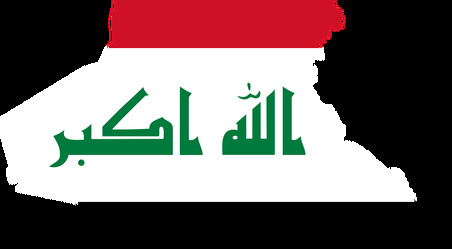Prospective Development of the UN's Gender Architecture
Marguerite Peeters FAITH Magazine September-October 2009
The director of the Brussels Institute for Intercultural Dialogue Dynamics, describes how global leaders are preparing to impose their new post-modern values upon the lives of millions. This article confirms the relevance of Pope Benedict's much maligned meditation on the sexes last December — see our March '09 editorial. It is based upon a report issued last June by the Institute.
Introduction
At this time there are discussions underway at the global governance level to overhaul the 'gender architecture' of the UN system. These discussions are expected to end before the end of August and to result in a "consensus decision" of UN member states' delegations on the structure of the new Gender Architecture. Quietly, a major institutional development with deep and wide political, cultural and anthropological implications across the globe is about to happen at the UN level. The new structure will deal with what is most fundamental in our human identity: male and female equality, their social roles, the nature of their differences and relationship. Hence the vital importance of grasping the stakes of the global governance "gender equality" norm - what both words - "gender" and"equality" mean in the language of the norm-setters, who is at the rudder of global governance, what their strategic vision and agenda are.
1. The Origins of the Gender Concept, its Ambivalence and Current Challenges
A quick reminder about the gender equality concept. Forged by US gender feminists in the 1970s against the backdrop of May '68, the postmodern notion of gender became the object of an alleged "global consensus" at the 1995 UN Beijing conference on women. The gender concept was created in dialectical opposition to "sex" (i.e. male and female biological differences) to describe those differences considered to be "socially constructed". The gender ideology process treats motherhood and human spousal/heterosexual identity as social constructions or stereotypes that must be deconstructed to grant each individual an equal access to "free choice". It interprets "equality" exclusively in terms of social, cultural, economic, civil and political power and rights. The anthropological structure ofman and woman as a given is not taken into account.
In the late 1990s, "gender equality" was transformed into a transversal priority of international cooperation, leading into the Millennium Development Goals forged by the UN Secretariat in 2001. It has become one of the foremost norms of contemporary global governance.
The "gender equality" UN norm is inclusive of and inseparable from the other UN norm of "reproductive health and rights", which is itself inclusive, inter alia, of "safe abortion" and of universal access to contraceptive information and services by 2015. Global governance increasingly interprets gender equality as being explicitly inclusive of lesbian, gay, bisexual and transgender (LGBT) rights. In this light the new US administration's policy concerning these rights, articulated at the beginning of the recent Gay Pride month provides a politically significant boost to the UN's current gender agenda (see appendix).
The majority of people living in the developing world are still deeply attached to their cultural traditions and universal human values which western civilization has deconstructed, such as the family, male and female complementarity, and the role of woman as mother and educator. Abusing their trust, global governance agents of change use the fuzzy expression "gender equality" in the developing world allowing it to be understood as a policy enhancing a greater recognition of the inherent equal dignity of the woman, while in fact it hides their own agenda. For a while, until they force governments and cultures effectively to interpret gender equality according to their agenda, there is an ambivalence and the aspirations of the people coexist with their agenda. A healthy awareness of theneed to promote the dignity of woman in the developing world may thus be engineered by those in power and become entangled with the global gender revolution. In this regard, one of the most preoccupying features of the new Gender Architecture is its seamless approach to normative and operational activities, which will force national and local implementation of norms forged at the global level and as the "experts" - not national cultures - interpret them.
2. Current UN Gender Machinery
The machinery at present in place within the UN system to implement "gender equality" and women's empowerment is impressive. It was greatly strengthened following the Beijing conference. Yet the agents of change want to consolidate it further.
The UN currently has four "gender-specific entities". "Gender-specific" means "specifically mandated to promote gender equality and women's empowerment". These four entities are:
• OSAGI : Office of the Special Adviser on Gender Issues and the Advancement of Women created in 1997 as part of the UN Secretariat.
• DAW: Division for the Advancement of Women (UN Secretariat).
• UNIFEM: UN Development Fund for Women (Fund created in 1976 after the first women's conference in Mexico).
• INSTRAW: UN International Research and Training Institute for the Advancement of Women (institute created in 1976).
In addition, following the UN's 1995 Beijing Conference on Women, the "global norm" of "gender equality" was applied or 'mainstreamed' throughout the UN system. The mainstreaming exercise was effective. It produced tangible results. One of them is that achieving gender equality is now considered as belonging to the "mandate" of "all organizations of the UN system, including Departments and Offices of the Secretariat, Funds, Programmes and Specialised Agencies": these bodies "are required to address the gender perspectives of their distinctive substantive programmes and activities".
An analytical comment on the UN use of the word "mandate" appears necessary. The mandate of UN bodies in fact did not formally change following the Beijing conference. But the conference fundamentally reinterpreted the meaning of the equal dignity of male and female recognised in the UN Charter in 1945 (see charter preamble which refers to the "equal rights of men and women"). "Gender equality" is a very different, postmodern notion, redefining male and female identity. Hence the Beijing "consensus", a "soft" document with no binding character on governments or the UN as an intergovernmental body, proves stronger than hard law, which it reinterprets by stealth. The end result is enforcement of soft "consensus" documents by means of existing hard law and formal mandates.
Among the UN entities playing a special role in the current global "gender revolution", it is worth mentioning UNFPA (population, "reproductive health and rights"), UNDP (development), WHO ("reproductive health and rights") and UNESCO (education, gender training).
In addition, following Beijing, gender units, gender advisers and departmental focal points were established "throughout the UN system, including in the Secretariat". "At the Regional level, the Regional Commissions of the UN support Member States in addressing gender equality issues from the regional and sub-regional perspectives. At the country level, Gender Theme Groups contribute to and monitor gender mainstreaming in the work of the UN Country Teams."[1] For 'support' here it seems reasonable to read 'pressure'.
3. From Consultative, Informal Power to Effective, Global Implementation Power
As part of the framework of UN reform, Kofi Annan tasked a "High Level Panel" to reflect on "System-Wide Coherence". The Panel recommended
"strengthening the coherence and impact of the United Nations institutional gender equality architecture by streamlining and combining existing gender institutions into a consolidated United Nations gender equality and women's empowerment entity"[2].
Talks about a new Gender Architecture began at the Millennium plus five Summit in 2005. On 15 September 2008, the General Assembly adopted a resolution on System-wide Coherence (A/RES/62/277). Discussions between Member-States began after the UN Secretariat issued its "Concept Note on a Strengthened Architecture for Gender Equality and Empowerment of Women" on August 1, 2007. The Secretariat thereafter issued several papers: Note on the United Nations Support to Member States on Gender Equality and Women's Empowerment (June 5, 2008); Institutional Options to Strengthen UN Work on Gender Equality and the Empowerment of Women (23 July 2008); Options for Strengthening Institutional Arrangements on Gender Equality and the Empowerment of Women (March 5, 2009), a paper drafted by the SecretaryGeneral's Special Adviser on Gender Issues, Rachel Mayanja; and Consolidated Response following discussions of the paper "Further Details on Institutional Options" (June 3, 2009).
Member states' delegations are now pressured to come to an agreement on the new Gender Architecture during the 63rd session of the General Assembly (the current session, ending at the end of August). Their decision will be taken by "consensus". The option most likely to be adopted is the Composite Entity model, which would
"combine Headquarters policy and normative support functions currently performed by Departments of the Secretariat with those for the country level operational and technical support characteristic of Funds and Programmes."[3]
From the beginning of what we may call the "gender revolution" in the 1970s to now, when the goals of a minority of western agents of change are about to take on a more visible, global and powerfully financed institutional form, the normative and operational activities of the gender equality process has been led by "experts", NGOs, UN Secretariat bureaucrats, panels - not by the man-on-the-street or his legitimate representative. The new entity, which at the time of writing it seems the August General Assembly will set up, seems intended to give these minorities decisive leverage over the majority effectively to enforce their agenda globally. Informal processes such as "gender mainstreaming" and "consensus-building" were critical. The new architecture would formalise theimplementation/enforcement process.
4. Reasons Given
The UN and its partners among women's groups nonetheless want to go further in the operationalization of their vision. They want to "overhaul" the system in place and consolidate the UN gender architecture. Below are some of the major arguments that they use to justify the need for a new entity:
• Intergovernmental policy making is fragmented.
• The system is lacking a recognised driver with authority and positioning to lead.
• Lack of accountability, inconsistency in political will.
• Non-performance.
• "Woefully inadequate" human and financial resources "at all levels".
• Inadequate country-level support, weak capacity and poor positioning at the country level.
• Insufficient emphasis on country ownership[4]
In the words of Ban Ki-moon,
"At the moment the UN gender architecture lacks a recognised driver. It is fragmented. It is inadequately funded, and insufficiently focused on country-driven demands. There are gaps between policies and implementation. Authority and accountability are weak."[5]
5. Stated Goals
The stated purpose of the Gender Architecture is to close the above-mentioned "gaps".
The various documents issued by the UN Secretariat since 2007 are consistent in outlining the following main features for the new body:
• Seamless effectiveness both in the field and at headquarters - both at operational level and at the normative level (synergies between policy research, analysis and substantive "support" for intergovernmental processes).
• Analytical, normative and operational leadership on gender equality and the empowerment of women.
• Single driver for gender mainstreaming in the UN system.
• Level of authority needed to hold all entities accountable for performance.
• Leader of innovative and catalytic country-driven programming, gender mainstreaming and capacity-building.
• Targeted technical cooperation and capacity-building in line with national strategies.
• Collaboration between Member States, the United Nations system and civil society, particularly women's NGOs
and networks.
As described by the UN Secretariat in a document issued on June 3, 2009, the functions of the new entity can be subdivided into four clusters:
- "Normative support: servicing the intergovernmental UN bodies where commitments, norms and policy recommendations on gender equality and gender mainstreaming are discussed and agreed upon; supporting the monitoring of these commitments...
- "Analytical work: preparing studies and reports supporting the multilateral decision-making process related to the normative work; assessing progress made in gender mainstreaming policies...
- "Gender mainstreaming: promoting the integration of the gender dimensions in the work programmes of all UN departments; supporting gender mainstreaming processes undertaken by the funds and programmes as well as the specialised agencies...
- "Programming, advisory services, technical assistance, training and capacity development: carrying out catalytic, targeted and multisectoral programming; providing advisory services worldwide for the effective implementation of the commitments and norms adopted at the global level in the area of gender..."[6]
The option most likely to be adopted by delegations is the Composite model combining the features of a Department of the UN Secretariat with those of a UN Fund/Programme. Should this option be chosen, almost 89 percent of the staff of the new entity would be in the field. It would be governed by an Executive Board, which would give it greater "flexibility" than a Department. The General Assembly may choose either to establish a new Executive Board or utilise an existing one such as the one of UNDP/UNFPA or UNICEF. The estimated staffing costs for the Composite entity are well over 1 billion dollars (1 Billion and 25 million).
6. Likely Effects
A few analytical remarks about the functions, structure and governance of the Gender Architecture appear appropriate:
What do "national ownership", "servicing member-states",
"country-driven", "support" of member-states mean in UN language? At this stage of the gender revolution, some 15 years after Beijing, the agents of change want countries -national governments and cultures - to "own" the gender agenda, to become themselves the drivers of the process that will transform their own values from within so as to align them with the norms coming from UN headquarters. Although taking the low-profile of an "assistant", "supporter" or "facilitator", the UN gender machinery wants to "lead" countries, both at the normative and at the operational levels. There is therefore no real service, no real advice, no real support, no real ownership, but rather surveillance, unrelenting pressure, imposition of conditionalities: developing countries well know out of bitterexperience that there is no development assistance without implementation of gender equality and reproductive health and rights policies and laws (as the experts interpret these "norms").
The new entity will grant experts and other global norm-builders even more power than they already enjoy. Possibilities for effective intergovernmental control will keep on diminishing. The normative power being in the hands of like-minded experts, there will be little if no room for pluralism. There will be more, faster and more aggressive cultural neo-colonialism: developing countries can get ready for a cultural tsunami imposing on their governments and cultures the western "gender equality" model and all it hides and contains.
The insistence on the "seamless approach" connecting the UN's normative and operational activities in the field threatens democratic pluralism, in the sense that there will be greater pressure for countries to implement the "norms" forged by UN experts at headquarters in the way these experts, not individual governments, interpret them. UN alleged "support" in the area of gender equality could then turn into a Diktat.
Should the General Assembly decide to put the new entity under the governance of the Executive Board of UNDP/ UNFPA, the new Gender Architecture would be led by the most powerful agents, not only of the Beijing conference, but of the Cairo conference on population - of the reproductive and sexual health and rights global agenda.
7. Conclusion: The Need for Education
To grasp the stakes of the new Gender Architecture, let us have the courage to take a hard look at the current balance of power at the global governance level: are real people, rooted in their local cultures and traditions, at the rudder, or is global governance effectively governed by a postmodern western intelligentsia, western experts, minorities and lobbies?
With western governments (US and EU) in support of the Beijing gender agenda and its many ideological ramifications, the new UN Gender Architecture will, in all likelihood, perform the functions presented in this report. In spite of the global financial and economic crisis, great funds will be allocated to the new entity. Gender equality has been since Beijing, and does remain under the current Secretary General, one of the UN's core priorities.
Developing countries can get ready for even stronger pressure, coming from the various bodies of the UN (Funds, Agencies, Programmes, regional commissions, country teams) and from bilateral donors, to increase their pace of implementation of the "gender equality" agenda. Effective implementation and "ownership" of gender equality and reproductive health will continue being forcefully imposed as conditions to obtain development assistance. The LGBT lobby will continue to gain ground in the developing world. Change will happen fast, aligning policies, laws and cultures along the UN "norms", everywhere in the world.
The greatest challenge lies in education. Laws, policies, norms, culture educate the citizen: they either help him or her recognise what is real, true and good, or deconstruct his or her reason, conscience and heart. When law is founded, not on what is given, but on the deconstruction of what is given, it loses its legitimacy.
What is it that makes developing countries so vulnerable to the invasion of concepts, values and norms that transform their cultures from within and neo-colonise them, in ways that could become irreversible? Apart from poverty and dependence on development assistance, it is ignorance of the content of the western cultural revolution - an ignorance that can be overcome. In reality they have the human and cultural capacity, the possibility and the values to resist this imposition, but will they have the knowledge and will to do so?
The new Gender Architecture - a giant with clay feet standing on sand, not on the firm ground of reality and what is good for the human person, will sooner or later collapse, even if now, it seems virtually impossible to escape the cultural, political and anthropological tsunami it will inevitably provoke.
APPENDIX:
Extracts from President Obama's "Proclamation in Honour of Lesbian, Gay, Bisexual and Transgender Pride Month"
"Due in no small part to the determination and dedication of the LGBT rights movement, more LGBT Americans are living their lives openly today than ever before. I am proud to be the first President to appoint openly LGBT candidates to Senate-confirmed positions in the first 100 days of an Administration. [...]
"The LGBT rights movement has achieved great progress, but there is more work to be done. LGBT youth should feel safe to learn without the fear of harassment, and LGBT families and seniors should be allowed to live their lives with dignity and respect.
"My Administration has partnered with the LGBT community to advance a wide range of initiatives. At the international level, I have joined efforts at the United Nations to decriminalise homosexuality around the world. Here at home, I continue to support measures to bring the full spectrum of equal rights to LGBT Americans. These measures include enhancing hate crimes laws, supporting
civil unions and Federal rights for LGBT couples, outlawing discrimination in the workplace, ensuring adoption rights, and ending the existing "Don't Ask, Don't Tell" policy in a way that strengthens our Armed Forces and our national security. We must also commit ourselves to fighting the HIV/AIDS epidemic[...]
"These issues affect not only the LGBT community, but also our entire Nation. As long as the promise of equality for all remains unfulfilled, all Americans are affected. If we can work together to advance the principles upon which our Nation was founded, every American will benefit. [...]
"NOW, THEREFORE, I, BARACK OBAMA, President of the United States of America, by virtue of the authority vested in me by the Constitution and laws of the United States, do hereby proclaim June 2009 as Lesbian, Gay, Bisexual, and Transgender Pride Month. I call upon the people of the United States to turn back discrimination and prejudice everywhere it exists."
Secretary of State Hillary Clinton: 'In Recognition of Gay and Lesbian Pride Month 2009'
"[...] the gay rights movement [...] has grown into a global movement to achieve a world in which all people live free from violence and fear, regardless of their sexual orientation or gender identity.
"[...] I extend our appreciation to the global LGBT community for its courage and determination during the past 40 years, and I offer our support for the significant work that still lies ahead [...]
"The persecution of gays and lesbians is a violation of human rights and an affront to human decency, and it must end. As Secretary of State, I will advance a comprehensive human rights agenda that includes the elimination of violence and discrimination against people based on sexual orientation or gender identity.
"Though the road to full equality for LGBT Americans is long, the example set by those fighting for equal rights in the United States gives hope to men and women around the world [...]
"This June, let us recommit ourselves to achieving a world in which all people can live in safety and freedom, no matter who they are or whom they love."
[1]ReformUN.org Latest Development, 4-5, Issue 309. Discussion of the SG note on Strengthening Fundingslrchitecture. June 4, 2009.
[2]UN Secretary General. Options for Strengthening Institutional'Arrangements on Gender Equality and the Empowerment of Women. March 5, 2009.
[3]ReformUN.org, op. cit, 15.
[4]Consolidated response following discussions of the paper Further Details on Institutional Options. June 3, 2009.
[5]jNote on the United Nations Support to Member States on Gender Equality and Women's
Empowerment. June 5, 2008.
[6]Consolidate response, op.cit.





